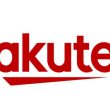Avtec, Trident partner on digital trunked radio interface
Dispatch system vendor Avtec Inc. and Trident Micro Systems—a manufacturer of digital trunked radio network infrastructure—will announce a jointly developed digital interface that connects Trident’s NTS solution and Avtec’s DSPatch and DSPatchNET console communications systems during next week’s Enterprise Wireless show in Nashville, Tenn.
The interface is based on Trident’s PassPort trunked radio protocol and will be targeted to the transportation, military, public safety and energy sectors. It provides customers with access to all user ANI (automatic number identification) data, selective calling features (such as the ability to set up one-to-one radio calling), emergency call-in information (including one-touch priority calling) and the ability to set up talk groups.
Avtec was seeking strategic alliances “with other good companies” when some of its personnel attended IWCE 2005 in Las Vegas last April, said Michael Ridge, product marketing manager. Prior to leaving for the show, Avtec executives identified IWCE exhibitors that might make good candidates.
“Trident was on the list,” Ridge said. “Things just sort of made sense from there.”
Rhett Grotzinger, Trident’s vice president of sales and marketing, said the respect was mutual. “Avtec is a real standout organization. They pretty much dominate the utility business and, in large part, the rail industry as far as the console side of things.”
Grotzinger said the partnership makes sense in part because the companies are synergistic. “There’s not a whole lot of difference between what you do with a console in a public-safety environment and what you do with it in a utility, rail, airline or other environment,” he said.
Grotzinger added that the fact the two companies are located just 2-1/2 hours apart was a big plus. “[Because] Avtec is geographically proximate to Trident, that facilitated the ramping up of the engineering to bring out a solution that is a really clean integration with our NTS infrastructure.”
Though the companies are leveraging existing technology platforms, “there is actual engineering going on from both directions,” Grotzinger said.
“We’re not saying to each other, ‘This is what we do, now meet us,’” he said. “We’re not trying to make a square peg fit a round hole.”
Initially, the two companies will focus on the utilities market when the interface begins shipping in the first quarter of next year. Grotzinger said the sector represents a “big opportunity,” because many utilities are in the process of forklift replacements of legacy communications systems.
Ridge agreed. “Previously there had been a lot of turmoil in the utility sector, with the Y2K scare and deregulation, which forced them to separate their transmission and generation assets. That took a lot of time to figure out. But now they have their business plans in order, and they’re trying to figure out what infrastructure they need to have to support these business plans. That’s driving the replacement of existing radio technology, because most of it is antiquated.”

















